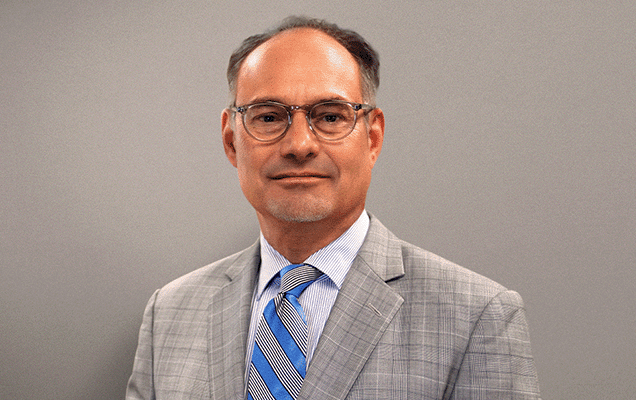If your doctor has recommended you undergo surgical treatment of your brain tumor, it can be helpful to understand how long is surgery to remove a brain tumor, particularly if you will have someone in the waiting room during the process. Having a clear idea of what you yourself can anticipate on the day of your surgery can also help lessen the stress of undergoing treatment.
Brain tumor surgery often takes longer than people might expect, and the wait during the procedure can seem long. Being able to answer your family or friends if they ask, “How long is surgery to remove a brain tumor?” will help you plan for the day of your procedure and help set their minds at ease as they wait to visit you in your room afterward.
Overview of Brain Tumor Surgery
The specific procedure you undergo will depend on the type of brain tumor you have been diagnosed with, as well as its size and location. Your surgeon may remove all or part of the tumor, depending on the proximity of nearby structures and whether or not you will be having adjunct therapy following your surgery.
Generally speaking, there are two reasons for brain tumor surgery: biopsy and resection. In a biopsy, your surgeon will take a small section of tumor and send it to a pathologist, who will look at it under a microscope to make or confirm a brain tumor diagnosis. Resection is the surgical removal of all or part of the tumor itself. Surgeons will often perform a biopsy and resection at the same time.
To access your brain tumor, a craniotomy is usually completed at the start of surgery. This is the removal of a small section of skull to allow the surgeon to reach the tumor. Your surgeon will remove as little bone as possible, which will be replaced following surgery and secured using a plate and/or screws. Sometimes the surgeon can limit the craniotomy to a keyhole-sized incision in the skull and use specialized instruments to remove the tumor, utilizing a minimally invasive approach.
Sometimes brain tumors can be accessed without a craniotomy, such as some pituitary adenomas. The surgeon may be able to reach your brain tumor through your nasal passage and reach the tumor using a transsphenoidal or transnasal approach. This, along with other minimally invasive approaches, are often favored by surgeons when they are an option.
How Long Is Surgery to Remove a Brain Tumor?
Because multiple factors can come into play, your doctor will be the best person to give you an exact estimate of how long your surgery will take.
The following guidelines can help you estimate approximately how long is surgery to remove a brain tumor. Remember that brain tumor surgery involves an entire team of people, as well as monitoring of vital signs, positioning of equipment and ensuring you are comfortable before your procedure begins. The time elapsed between your room being cleared of visitors to the actual start of surgery can be up to two hours. If you have people waiting for you, they should be aware of this extra time on top of the actual surgical procedure time.
- If your surgeon is only performing a biopsy, the surgery typically takes 2-3 hours.
- If your surgeon is performing a craniotomy and removal of your tumor, the surgery typically takes 4-6 hours.
- If your surgeon using a transsphenoidal approach to remove your tumor, the surgery typically takes 3-4 hours.
In addition to set-up time, any family or friends should also be aware that it could be 2-3 hours following the completion of your surgery before they are allowed to visit you in your room. This gives your care team time to monitor your vital signs and determine you have stabilized without complications.
We are more than surgeons,
we are your support system.
What Can Affect the Surgery Length?
Besides setup and brain tumor recovery time, there are other factors that can influence the question of how long is surgery to remove a brain tumor. If you have visitors waiting during your procedure, be sure to emphasize that the length of the procedure is not indicative of its success and not to be concerned if the time runs longer than estimated.
Some factors that may impact the length of your surgery to remove your brain tumor include:
- The size of your tumor
- The location of your tumor and accessibility
- What structures are nearby, including nerves and blood vessels
- If your surgeon is performing multiple procedures in one surgical session
- Any complicating health conditions you may have, including advanced age
Continue the Discussion
To better understand what you can expect on the day of your surgery, continue the conversation with your personal doctor at your next appointment. He or she will be able to give you a more precise estimate and relate any specific factors that may impact the length of your surgery to remove your brain tumor.
It is important to discuss the anticipated length of your procedure with anyone who will be accompanying you. Reassure them that it may take longer than estimated and that additional procedural time is not a cause for concern. Remind them to take into account setup and recovery time and that the hours can add up quickly. This will help them plan accordingly and relax as they wait to greet you following your surgery.

About Dr. Jonathan H. Lustgarten
Dr. Jonathan Lustgarten is an accomplished neurosurgeon in Central Jersey and is a proud member of Neurosurgeons of New Jersey, practicing out of the West Long Branch office conveniently located on Highway 36 West. His surgical expertise includes brain and pituitary tumor treatment, image-guided surgery, spinal and disc surgery including minimally invasive spinal fusion and alleviation of pain due to fractures in the spine. He is also well versed in the surgical and radiosurgical treatment of facial pain disorders. He specializes in Cyberknife, Gamma Knife, Gamma Linac and Tomotherapy radiosurgery. Dr. Lustgarten has been treating Central Jersey patients for over 25 years and is currently accepting new patients.
Recent Posts:






